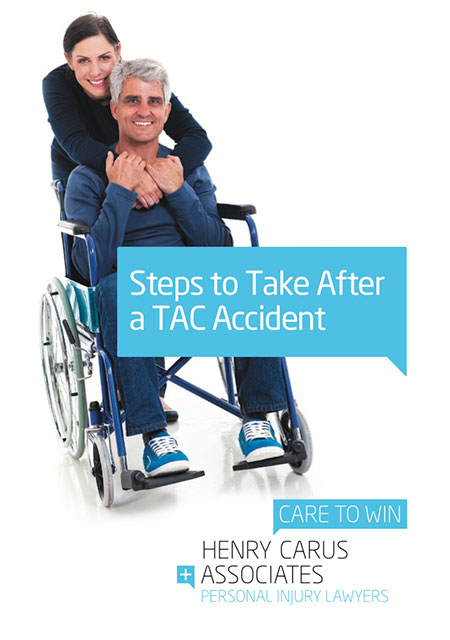
Pedestrian crossing accidents can result in serious injuries—or worse. Last year in Victoria, the Transport Accident Commission (TAC) received approximately 465 claims for pedestrians who required hospitalisation after an accident. Pedestrians also account for approximately 17% of the lives lost every year in VIC road accidents.
If you were injured in a car and pedestrian accident, you should not hesitate to seek legal guidance as soon as possible. Henry Carus + Associates understand the devastating toll of pedestrian crossing accidents, and we are dedicated to maximising your benefits and other compensation.
Call 03 9001 1318 today for a FREE, no-obligation consultation. Our lawyers serve clients who have been injured in pedestrian crossing accidents in Melbourne and throughout Victoria.
What Rights Do Pedestrians Have at Crossings?
You would expect that a pedestrian crossing (also known as a zebra crossing) would be the safest place to cross the road. Crossings are clearly marked by white stripes on the surface of the roadway, and they are often accompanied by a sign and/or alternating yellow lights designed to slow or stop traffic. Furthermore, drivers are required to give way to pedestrians who are already in or entering a crossing.
Additional rules apply for stopping at a children’s crossing. Drivers are required to exercise caution if a child is crossing the road or a handheld stop sign is displayed.
Unfortunately, motorists don’t always follow the rules of the road. When they fail in this duty, pedestrians pay a disproportionate price.
How Common Are Pedestrian Crossing Accidents?
Though statistics specific to pedestrian crossing accidents are not available, the Transport Accident Commission reports that more than 60% of deaths in a car and pedestrian accident in VIC occur when pedestrians are crossing the street. One-third (33%) of these crashes happen when the pedestrian is on the near side of the street, while 28% occur on the far side.
According to the TAC, 175 pedestrians have been killed in Victoria in road accidents in the last 5 years. 70% of these fatal accidents occurred in Metro Melbourne.
What Are the Causes of Pedestrian Accidents?
Pedestrian accidents happen for a number of different reasons. Some of the most common causes include:
- Distracted driving or walking
- Speeding
- Failure to give way
- Disobeying traffic signals
- Jaywalking (i.e., crossing the road outside designated crosswalks)
- Poor visibility (including low lighting, bad weather, and obstructed views)
- Drink driving or intoxication on the part of a pedestrian
- Aggressive driving
- Failure to check a vehicle’s blind spots
- Poor infrastructure (i.e., lack of proper crosswalks, pedestrian signals, and footpaths)
- Careless turns by motorists
- Drowsy driving
- Age and mobility (children and elderly individuals might have reduced awareness or slower mobility)
- Pedestrians wearing dark clothing at night
Motorists and pedestrians alike have a responsibility to exercise caution when using the road. This is especially true at a pedestrian crossing, where foot traffic and vehicle traffic come into close proximity with one another.
What Are the Most Common Pedestrian Injuries?
Depending on the circumstances, a pedestrian may sustain everything from minor scrapes and bruises to catastrophic injuries in a crash involving a motor vehicle. Common injuries suffered in pedestrian accidents include:
- Road rash
- Bone fractures
- Lacerations
- Head injuries
- Spinal injuries
- Damage to the liver, spleen, kidneys, lungs, and other internal organs
- Internal haemorrhage
- Loss of limbs
- Psychological injuries
Speed is a major determining factor in the seriousness of a car and pedestrian accident. According to Victoria Walks:
‘The risk of pedestrian death rises exponentially with collision speeds beyond 30 km/h. It is estimated that less than 10% of pedestrians would die when struck by a vehicle travelling at 30 km/h, compared with fatality rates of 26% at 40 km/h and over 80% at 50 km/h.’
Drivers are required to reduce speed when approaching a pedestrian crossing and, if someone is crossing the road, come to a complete stop. The failure to do so often leads to devastating consequences for pedestrians.
I Was Hit by a Car as a Pedestrian: What Do I Do?
Being struck by a vehicle is a traumatic experience. If you were seriously injured, you should call 000 and wait for the paramedics to arrive. You may need to be transported to hospital immediately.
If your injuries are not deemed serious, there are additional steps you should take at the scene:
1. Collect All Necessary Information
You will need the following to make a TAC claim:
- The location of the accident
- Details of your injuries
- A description of the circumstances involved in the crash
- The name of the driver and/or the owner of the vehicle
- Driver’s licence number
- Vehicle registration information
- Insurance coverage details
2. Photograph the Scene
Take pictures of the vehicle that hit you and any damage from the collision. Check the roadway for skid marks and debris, and photograph them as well. You should also take pictures of the area around the accident site, including the pedestrian crossing and any signs or lights in the vicinity.
3. Talk to Witnesses
Ask any bystanders if they saw the accident and get their statements. Don’t forget to take down the name and contact information for any witnesses.
4. Report the Accident to the Police
If the police were not called to the scene at the time of the crash, you should report the incident as soon as possible. The TAC requires that accidents be reported to the police before making an accident claim.
5. Get Medical Treatment
Visit your GP or go to the hospital for further examination of your injuries. Complete medical records are essential for getting the benefits you deserve.
6. Lodge a TAC Claim
According to the TAC, pedestrians ‘who were injured or died in accidents caused by the driving of a car, motorcycle, bus, train or tram’ in Victoria can make claims for compensation. It is in your best interest to file a TAC claim promptly.
Read More: Do I Have a Pedestrian Accident Claim?
7. Talk to a Lawyer
Pedestrian crossing accidents often have life-altering consequences. You may be entitled to additional compensation if you were seriously injured, but a favourable outcome is not guaranteed. Having an experienced lawyer on your side is crucial for understanding and preserving your legal rights.
Is a Driver Always at Fault When Hitting a Pedestrian?
The driver is generally found to be at fault for a car and pedestrian accident. However, this is not always the case. Situations where the fault for a crash may lie with the pedestrian include:
- The pedestrian crossed against the signal
- The pedestrian darted into traffic suddenly, giving the driver little to no time to avoid a collision
- The pedestrian was distracted by a mobile phone, wearing headphones, etc.
- The pedestrian was intoxicated
- The pedestrian crossed outside of a designated crossing (i.e., more than 20 metres away)
In Victoria, questions of fault usually apply only in situations where someone suffers a serious injury. Negligence must be established for the recovery of common law personal injury damages, but more than one party may be at fault.
Common law claims operate on the basis of ‘contributory negligence’. If you are found to be partly at fault for an accident with a motor vehicle, you can still pursue common law compensation. However, any damages will be reduced by a percentage equal to the level of negligence on your part.
Serving Those Injured in Pedestrian Crossing Accidents
Henry Carus + Associates explore all options for recovery after a pedestrian accident. You Deserve More, and our team will gather important evidence to ensure that all benefits are paid and your right to additional compensation is fully pursued.
 Call Us Today
Call Us Today



